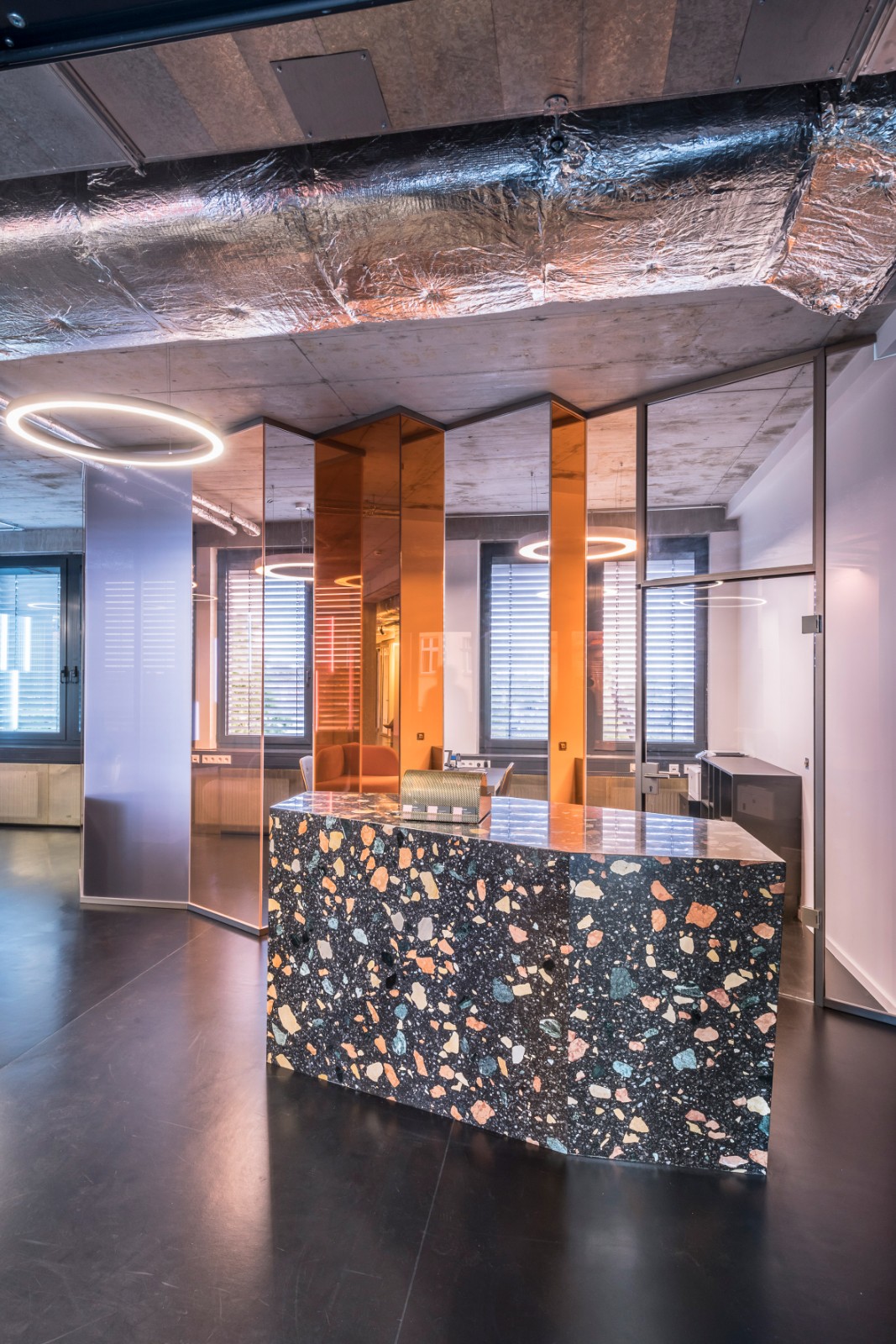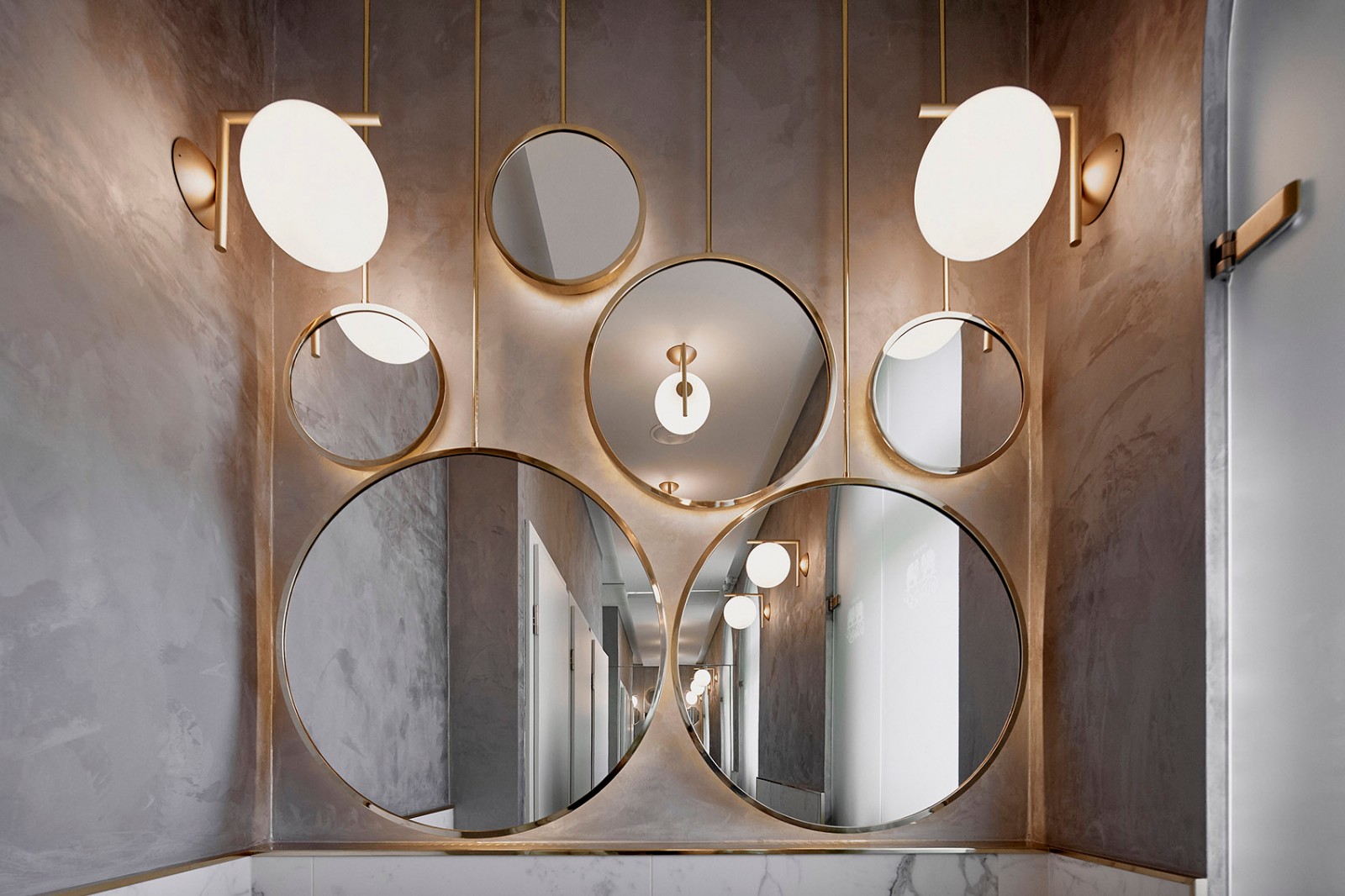Hammam and Apartements in Patumbah
2017-07-15 02:00
建筑帕通巴别墅建于1883-1885年,由奇奥德拉(Chiodera)建造。
Architecture Villa Patumbah was built in 1883-1885 by Chiodera & Tschudy for Carl Fürchtegott Grob. The architectural design, with lush stylistic motifs, reflects the material wealth of the builder and his memories of extensive travels and business success in Southeast Asia. In 1929, the plot was divided into northern and southern sections by selling the lake-facing site. The present development concept envisages preserving the spatial depth of the historical park as much as possible, thereby offsetting the loss of historical substance and content. Along the park edges, two irregularly cut volumes are integrated into the park landscape by large incisions and restrained colors and material.
Mühlebachstrasse站点-这座伸展很长的建筑以多种方式使用:它包含梯田式住房,以及一个包含工作区和集市的Hammam部分。十套公寓中有七套在街上有自己的入口处,并延伸到三到四层以上。通过将住宅单元交织在一起,多层照明的起居室的居民从公园边缘的特殊情况中受益。多层HAMMAM作为一种体积分异的建筑体积,完成了向南的开发.只有通过马什拉比亚打开的弥撒,与东方的模型有关。
Mühlebachstrasse Site The long-stretched building is used in a variety of ways: it contains terraced-type housing, and a hammam section including a work area and bazaar. Seven of the ten apartments have their own entrance on the street and extend up over three to four floors. By interweaving the residential units, the inhabitants of the multilaterally-illuminated living rooms benefit from the special situation at the edge of a park. As a volumetrically differentiated building volume, the multi-storey hammam completes the development to the south. The mass, opened only through mashrabiya, relates to oriental models.
内向,被保护在视野之外,内部与外部世界是分离的。根据沐浴仪式的顺序,室内空间被划分为:预热、温暖、炎热和休息的房间,以及按摩空间和屋顶露台,可以看到公园的景色。
Introverted and protected from view, the interior is separated from the outer world. The interior spaces are divided according to the sequence of the bathing ritual: pre-warming, warm, hot and resting rooms, as well as massage spaces and a roof terrace with a view of the park.
该结构由钢筋较轻的混凝土墙和板组成.混凝土墙是承重板,作为梁,并与楼板,形成一个整体的整体支持系统,以适应大跨度和悬臂。外墙由外部的内部绝缘和明显暴露的混凝土表面组成。用海绵技术构造的矿物釉实现了浅色设计。一个由预制混凝土构件制成的马什拉比亚,伴随着窗户和露台,暗示着建筑中包含的特定程序,并将该项目融入了由Fin de SiècleArchitecture装饰的环境中。
The structure consists of lightly-reinforced concrete walls and slabs. The concrete walls are load-bearing panels, acting as beams, and, together with the floor slabs, form a monolithic overall support system for accommodating the large spans and cantilevers. The outer walls are composed of interior insulation and visibly exposed concrete surfaces on the exterior. The light color design was achieved with a mineral glaze, which is structured by a sponge technique. A mashrabiya, made from prefabricated concrete elements, accompanying the windows and terraces, alludes to the particular program contained within the building and integrates the project into the environment embellished by Fin de Siècle architecture.
该建筑是按照生态建筑原则设计和建造的。由于Hhammam需要高温流动,所以选择了一种用于所有地区的球团加热器。
The building was designed and built according to ecological building principles. Due to the necessity of high temperature flow required for the hammam, a pellet-heater was chosen to be used in all areas.
佐利克街沿线有18套大型公寓,每套公寓都是在一层楼上组织起来的,以石墙和阴凉植物为标志。不寻常的建筑深度近30米被慷慨的,不同的分区平面图所克服,让人想起上个世纪的资产阶级城市房屋。在佐利克大街的一侧,切口形成了一口小水井,沿着街道划分了建筑的体积。一个与公园的密切关系是通过宽敞的,开放式的居住区域与Loggias实现的。
Zollikerstrasse Site Along the Zollikerstrasse, marked by stone retaining walls and shady plants, there are eighteen large apartments, each organized on a single storey. The unusual building depth of almost thirty meters is overcome by generous, differently zoned floor plans, reminiscent of bourgeois city houses from the last century. The cuts, forming light-wells on the side of Zollikerstrasse, divide the volume of the building along the street. A strong relation to the park is achieved through spacious, open-plan living areas with loggias.
建筑的围护结构是作为一个暴露的混凝土外墙,与建筑物的热工技术分开。墙板在建筑纵向和横向与岩心结合,保证了建筑物抗风、抗地震的稳定性。这些稳定核心反过来通过它们与下层地板的连接而固定。
The building envelope is constructed as an exposed concrete façade, separated from the building by thermal technology. The wall panels, integrated into the cores in the longitudinal and transverse direction of the building, ensure the stability of the building against wind and earthquake forces. These stabilizing cores are in turn fixed via their connections with the lower floor plates.
正面的表面被喷砂,涂上了双色的矿物釉。因此,经过处理的混凝土的触觉仍然可见。由于釉的双色应用,建筑的表现方式难以明确界定,从而有助于其在多元化环境中的整合。
The surfaces of the facades were sandblasted and painted with a two-color applied mineral glaze. The haptics of the treated concrete thus remain visible. Due to the two-color application of the glaze, the expression of the building defies a clearly defined aspect, thereby aiding in its integrattion within a diverse environment.
建筑物的温度由地热热泵调节,并获得了Minergie证书,这要归功于最佳隔热建筑围护结构和平衡通风。设计中强调了生态原则。
The building’s temperature is regulated with a geothermal heat pump and received a Minergie certificate thanks to the optimally insulated building envelope and balanced ventilation. Ecological principles were emphasized in the design.
Architects Miller & Maranta
Location Mühlebachstrasse, 8008 Zürich, Switzerland
Architects in Charge Quintus Miller, Paola Maranta, Jean-Luc von Aarburg
 举报
举报
别默默的看了,快登录帮我评论一下吧!:)
注册
登录
更多评论
相关文章
-

描边风设计中,最容易犯的8种问题分析
2018年走过了四分之一,LOGO设计趋势也清晰了LOGO设计
-

描边风设计中,最容易犯的8种问题分析
2018年走过了四分之一,LOGO设计趋势也清晰了LOGO设计
-

描边风设计中,最容易犯的8种问题分析
2018年走过了四分之一,LOGO设计趋势也清晰了LOGO设计






































































